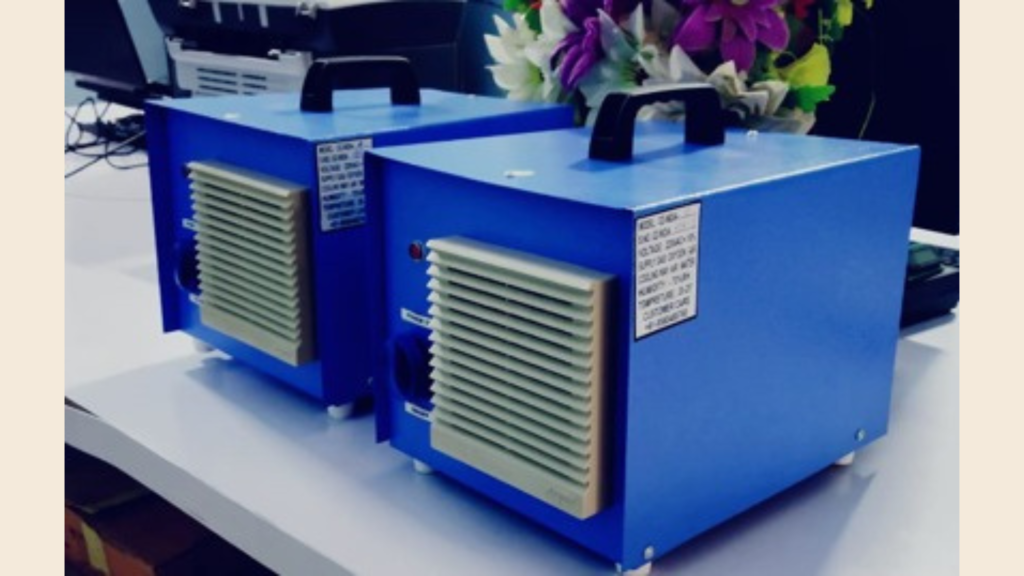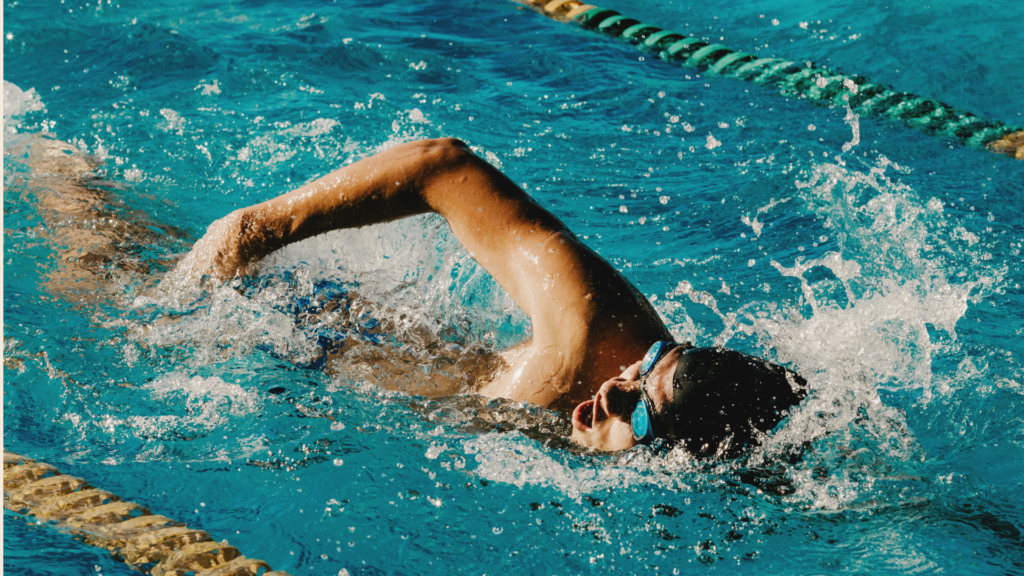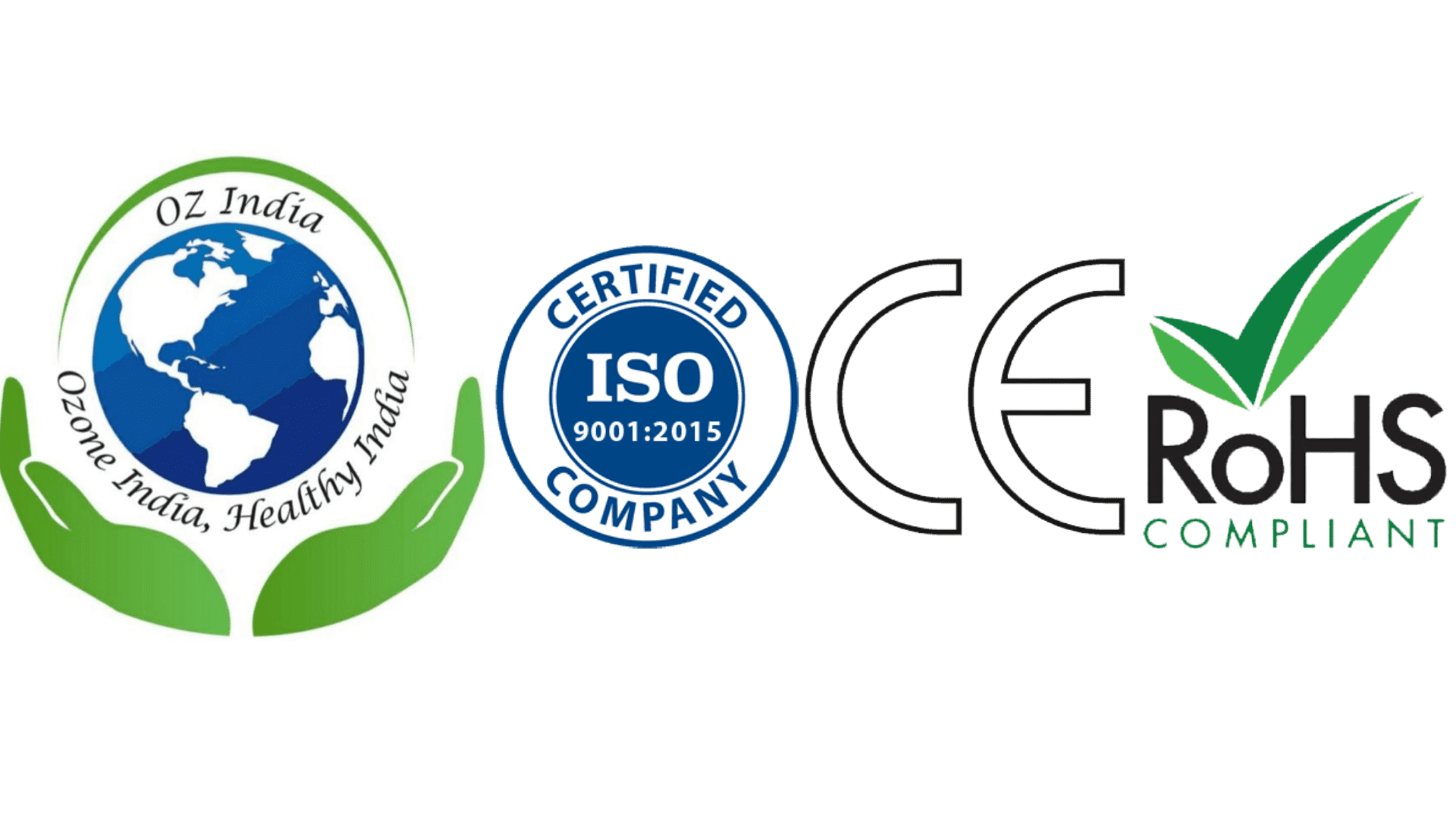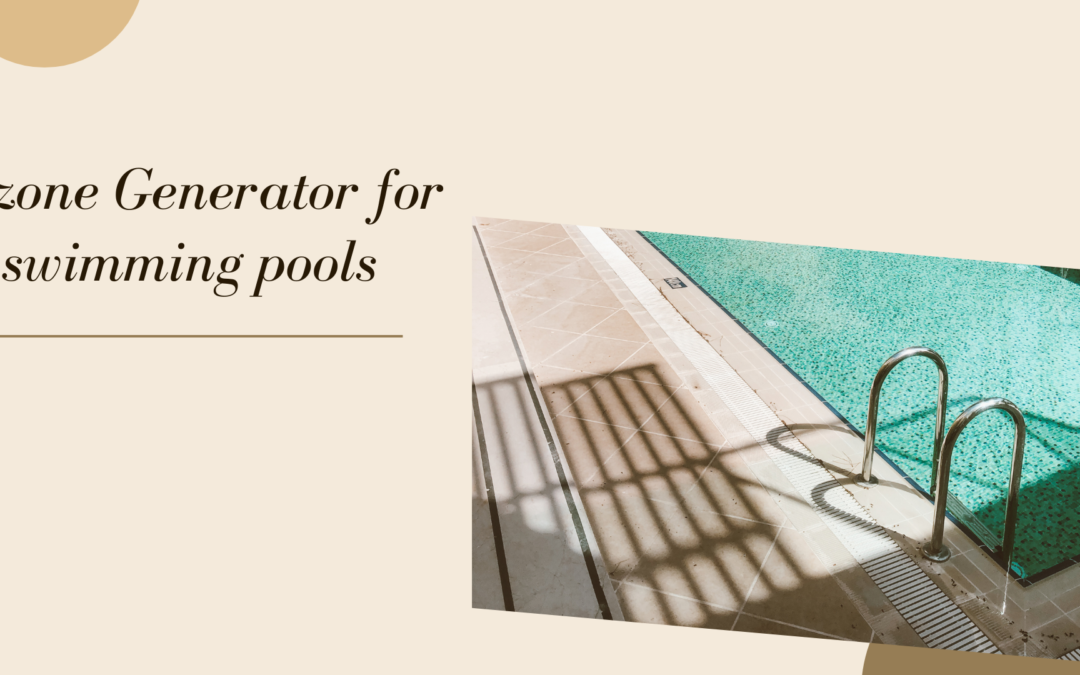I. Introduction to Ozone Generation for Swimming Pools
An ozone generator for a swimming pool is a device that produces ozone (O3) to treat the water and maintain its cleanliness and hygiene. Ozone is a powerful oxidizer and disinfectant that can effectively eliminate bacteria, viruses, algae, and other contaminants found in pool water. In this response, we will explore ozone generators for swimming pools in detail, covering their working principle, benefits, installation, maintenance, and other relevant information
A. Importance of Water Treatment in Swimming Pools
Swimming pool water treatment is crucial to maintain water quality, prevent the growth of harmful microorganisms, and ensure the safety and enjoyment of swimmers. Proper water treatment helps to eliminate bacteria, viruses, algae, and other contaminants that can lead to health issues and deteriorate water clarity.
B. Role of Ozone in Swimming Pool Water Treatment
Ozone is a highly effective disinfectant and oxidizer. When introduced into pool water, ozone reacts with contaminants, breaking them down and neutralizing their harmful effects. Ozone has a stronger oxidizing potential than chlorine and can eliminate microorganisms more efficiently, reducing the formation of disinfection by-products.
C. Introduction to Ozone Generators
An ozone generator is a device that produces ozone by using either the corona discharge method or the ultraviolet (UV) light method. These generators convert oxygen molecules (O2) into ozone (O3) and inject them into the pool water. Ozone generators are typically used in conjunction with primary sanitisers like chlorine or bromine, acting as a supplemental water treatment method.

II. Working Principle of Ozone Generators
A. Ozone Production Methods
1. Corona Discharge Method
In the corona discharge method, ambient air or pure oxygen is passed through a corona cell. High voltage electrical discharge causes the oxygen molecules to split, forming ozone. The generated ozone is then fed into the pool water.
2. Ultraviolet (UV) Light Method
The UV light method involves passing air or oxygen over a UV lamp that emits specific wavelengths of light. The UV light breaks the oxygen molecules, resulting in the formation of ozone. The ozone is then introduced into the pool water.
B. Conversion of Oxygen to Ozone
Both the corona discharge and UV light methods cause the conversion of oxygen (O2) to ozone (O3) by adding oxygen atoms to the molecule. Ozone is highly reactive and readily reacts with contaminants in the water.
C. Ozone Injection into Pool Water
Once ozone is generated, it is injected into the pool water either through the pool’s circulation system or via an ozone injector. The ozone dissolves into the water, where it starts oxidizing and disinfecting contaminants.
III. Benefits of Ozone Generation for Swimming Pools
A. Enhanced Disinfection
Ozone is a potent disinfectant that can effectively kill bacteria, viruses, and other microorganisms in pool water. It provides an additional layer of protection against waterborne illnesses, offering enhanced disinfection compared to traditional sanitisers like chlorine.
B. Oxidation of Contaminants
Ozone has strong oxidizing properties, allowing it to break down and destroy organic and inorganic contaminants in the water. It helps eliminate oils, sweat, urine, and other impurities, maintaining water clarity and improving overall water quality.
C. Reduction of Chloramines
Chloramines formed when chlorine combines with ammonia or other organic compounds, can cause unpleasant odours, skin and eye irritation, and respiratory issues. Ozone helps reduce chloramines, preventing their buildup and maintaining a more comfortable swimming environment.
D. Elimination of Chlorine By-Products
The reaction between chlorine and organic matter can produce disinfection by-products (DBPs) such as trihalomethanes (THMs) and chloramines. Ozone’s powerful oxidizing action can break down these by-products, reducing their formation and minimizing potential health risks.
E. Effective against Cryptosporidium
Cryptosporidium is a chlorine-resistant parasite responsible for waterborne outbreaks. Ozone has shown effectiveness in inactivating Cryptosporidium, making it a valuable tool in preventing the spread of this parasite in swimming pools.

IV. Integrating Ozone Generation into swimming Pool Water Treatment Systems
A. Primary Sanitizers: Chlorine and Bromine
Ozone generators are typically used as a secondary water treatment method in conjunction with primary sanitisers such as chlorine or bromine. Chlorine or bromine provides a residual sanitiser to continuously protect the pool, while ozone helps reduce the reliance on these primary sanitisers and enhances their effectiveness.
B. Role of Ozone as a Secondary Sanitizer
Ozone acts as a supplementary sanitiser, providing additional disinfection and oxidation. It helps reduce the burden on primary sanitisers, allowing for lower chlorine or bromine levels while still maintaining effective water treatment. This can result in reduced chemical usage and potential cost savings.
C. Ozone’s Role in Reducing Chemical Usage
By incorporating an ozone generator into the pool water treatment system, pool owners can potentially reduce the amount of chlorine or bromine needed to maintain water quality. This can lead to decreased chemical costs and less dependence on traditional sanitisers.
D. Maintaining Proper Water Balance
While ozone can help improve water quality, it does not provide a residual effect like chlorine or bromine. Proper water balance, including pH, alkalinity, and calcium hardness, remains crucial to ensure the effectiveness of the overall water treatment system.
V. Installation and Setup of Ozone Generators for Swimming pool
A. Sizing Considerations
The size of the ozone generator should be based on the pool’s volume and the desired ozone residual. Proper sizing ensures that the generator can produce enough ozone to effectively treat the pool water without overburdening the system or producing excess ozone.
B. Ozone Injection Point
The location of the ozone injection point is essential for efficient ozone distribution. It is typically placed after the pool’s filtration system to ensure contact between ozone and contaminants before the water returns to the pool. Proper injection point placement may vary depending on the pool’s design and circulation system.

C. Ozone Contact Time
The contact time between ozone and water is important for effective disinfection. Sufficient contact time allows ozone to react with contaminants and ensures optimal water treatment. The circulation system design and flow rate should be considered to achieve the desired contact time.
D. Plumbing and Electrical Requirements
Ozone generators require proper plumbing connections to integrate them into the pool’s circulation system. Electrical requirements should also be met, including the installation of a dedicated electrical circuit and grounding to ensure safe operation.
E. Professional Installation and Assistance
Due to the technical aspects involved in ozone generator installation, it is recommended to seek professional assistance. Pool professionals can assess the specific requirements of the pool, guide appropriate ozone generator models, and ensure proper installation and setup.
VI. Ozone Generator Maintenance and Operation
A. Ozone Level Monitoring
Regular monitoring of ozone levels in the pool water is essential to ensure effective water treatment. Ozone monitors or test kits can be used to measure and maintain the appropriate ozone residual concentration.
B. Cleaning Ozone Electrodes
In corona discharge ozone generators, the electrodes can accumulate deposits over time, affecting ozone production. Periodic cleaning of the ozone electrodes is necessary to maintain optimal performance. Manufacturer’s instructions should be followed for proper cleaning techniques.
C. Inspecting and Replacing Components
Regular inspection of ozone generator components, such as tubing, valves, and connections, is important to identify any wear or damage. Faulty or worn-out components should be replaced promptly to maintain the generator’s efficiency and longevity.
D. Safety Precautions and Guidelines
Safety precautions should be followed when operating and maintaining ozone generators. These may include proper ventilation to avoid ozone buildup, following manufacturer instructions, wearing appropriate personal protective equipment (PPE), and complying with local regulations and industry standards.
VII. Ozone Generator Safety Considerations
A. Ozone Concentration Limits
Ozone concentration should be maintained within safe limits to ensure the well-being of swimmers. Guidelines and regulations specify maximum allowable ozone levels in pool water to prevent potential health risks associated with excessive ozone exposure.
B. Ozone Exposure and Health Risks
While ozone is an effective water treatment method, high concentrations of ozone can be harmful to humans. Ozone exposure can cause respiratory irritation, eye and skin irritation, and other health issues. Proper ventilation and monitoring of ozone levels are crucial to minimize these risks.
C. Importance of Proper Ventilation
Adequate ventilation is necessary to prevent the buildup of ozone gas, as ozone is heavier than air and tends to accumulate in low-lying areas. Properly designed ventilation systems help remove excess ozone, maintain air quality, and ensure the safety of swimmers and pool personnel.
D. Compliance with Industry Standards and Regulations
Adherence to industry standards and local regulations is essential when installing and operating ozone generators. These standards address safety requirements, allowable ozone levels, and other guidelines to promote safe and effective ozone usage in swimming pools.
VIII. Comparing Ozone Generators for swimming pools with Other Water Treatment Methods
A. Chlorine and Bromine Sanitization
Chlorine and bromine are widely used primary sanitisers in swimming pools. Ozone generators can complement chlorine or bromine by reducing their usage and improving overall water quality, while also minimizing the formation of disinfection by-products.
B. Saltwater Chlorination
Saltwater chlorination systems generate chlorine from salt, eliminating the need for manual chlorine addition. Ozone generators can work synergistically with saltwater chlorination systems, helping to reduce chlorine demand and improve water quality.
C. UV Systems and Filtration
UV systems use ultraviolet light to inactivate microorganisms, while filtration removes debris and particulate matter. Ozone generators can work alongside UV systems and filtration, providing additional disinfection and oxidation capabilities.
D. Pros and Cons of Ozone Generators
Ozone generators offer several advantages, including enhanced disinfection, reduction of chemical usage, and elimination of chloramines and chlorine by-products. However, they require professional installation, regular maintenance, and proper monitoring to ensure optimal performance. Additionally, ozone does not provide a residual effect, necessitating the use of primary sanitisers.
Conclusion
Ozone generators offer a valuable supplemental water treatment method for swimming pools, providing enhanced disinfection and oxidation capabilities. They work alongside primary sanitisers like chlorine or bromine, helping to reduce chemical usage and improve water quality. The use of ozone generators in swimming pools offers several benefits, including enhanced disinfection, reduction of chloramines and chlorine by-products, and potential cost savings through decreased chemical usage. However, proper installation, regular maintenance, and monitoring are necessary for safe and effective operation. Seeking professional advice from pool experts or technicians is crucial when considering the integration of an ozone generator into a pool water treatment system. They can assess specific requirements, recommend appropriate equipment, and ensure proper installation and operation to maximise the benefits of ozone generation in swimming pools.


Trackbacks/Pingbacks